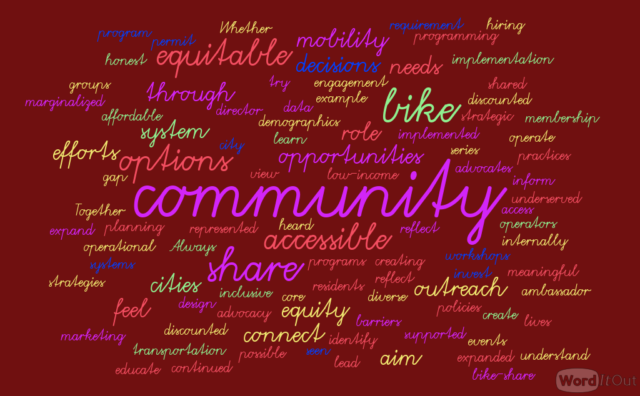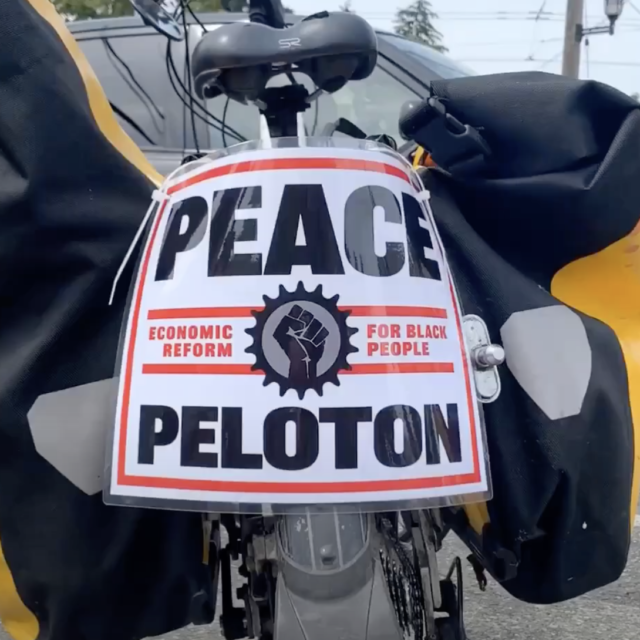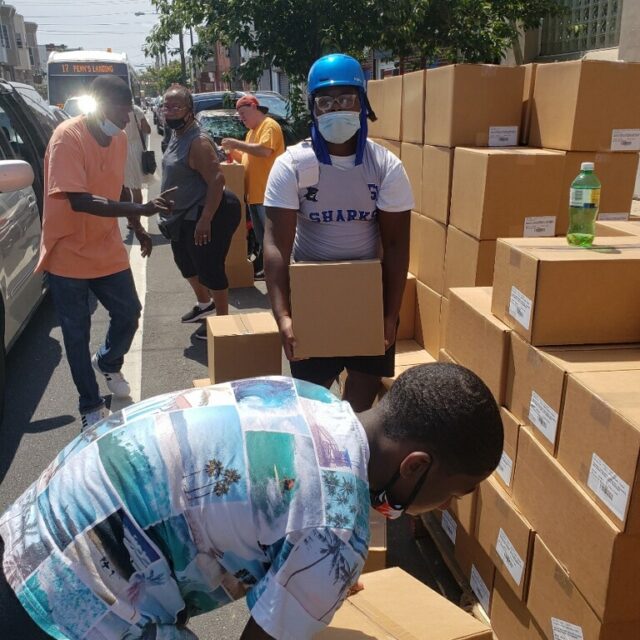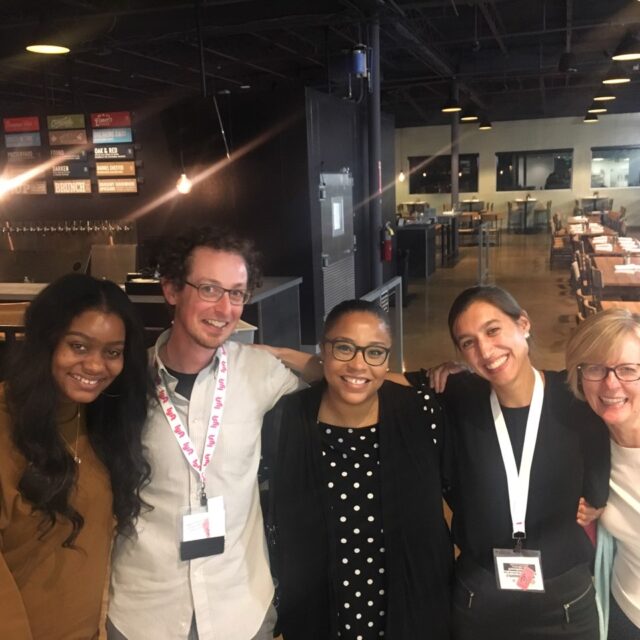Equity in Bike Share Community Engagement
by Farrah Daniel, Better Bike Share Partnership Writer
November 19, 2020

You can’t achieve equity in bike share without community engagement; the two go hand-in-hand. Additionally, it’s important to note creating an equitable bike share system is possible through a series of combined and continued efforts from advocates, cities, operators and community groups. Together, they can ensure honest and strategic engagement is at the core of the implementation of accessible mobility options.
For example, Oakland, Calif. made community outreach a requirement for shared micromobility companies seeking a permit to operate in the city. Plus, numerous bike share systems have implemented equity policies internally and expanded ambassador programs to lead community engagement.
To provide access to affordable and equitable bike share to people of all demographics, especially people of color in underserved and low-income communities, the key is to reflect the community you aim to serve. Use data to inform your decisions about discounted membership options, marketing outreach, accessible system design, and inclusive operational practices, like your hiring structure. That way, residents truly feel represented, not to mention advocated for and supported.
On top of that, invest in opportunities that allow you to connect with communities in meaningful ways. From your advocacy down to planning and operations, engagement efforts should be creative, diverse and accessible. It should also educate people through programming workshops or events in ways that meet their needs.
Whether you’re a planner or the director of a bike share program, your role is to learn and understand the transportation needs of a community. Always try to identify the opportunities that will make people feel seen and heard, especially when they’re used to being left out of policy decisions that represent their lives. As you aim to create equitable community engagement strategies, view your role as a bridge between cities expanding mobility options and the communities they serve.
Additional Resources
To learn more about equity in community engagement, check out these resources:
Bedford Stuyvesant Restoration Corporation released a report on its initiative to use Citi Bike as a vehicle for social and economic transformation. Under the partnership, Citi Bike Ridership in Bed-Stuy went up by 56%.
Without equity-based measures driven by nonprofit advocates and community-based groups, the Ford GoBike’s — now known as Bay Wheels — $5 discounted bike share membership would not have been possible.
Winter riding is difficult for many people. To increase bike share engagement and ridership during the colder months, check out the outreach and marketing strategies of these cities.
In 2015, Philadelphia’s Indego launched the nation’s first income-based discount program (Access Pass), one that accepts cash via PayNearMe. This one-pager provides an overview of the Access Pass and highlights key components to address disparities in financial access to bike and scooter share.
Bike share operators and community partners want to engage local youth but often forget that outreach strategies for youth can look different from those that engage adults. This Indego one-pager outlines the possibilities for youth outreach.
This resource is a collaboration of BBSP and the National Association of City Transportation Officials (NACTO). Check it out to learn tips and strategies for working with community members, as well as best practice examples from a variety of partnerships.
This article features 10 two-page bike share briefs filled with recommendations that were adapted from the National Scan of Bike Share Equity Programs, a 130-page report on the programs and initiatives addressing equity in bike share.
You’ll find briefs exploring these topics: equity policies, funding equity work, workforce development, marketing, data collection and metrics, community partnerships, payment and access technology, integrating bike share and transit, emerging devices in new mobility, and adaptive bike share.
This toolkit created by the North American Bike Share Association (NABSA) tackles the subject of workforce diversity and shares ways organizations can adopt more inclusive hiring processes for leadership and operational roles. It also includes more insight into how some leading companies in the industry have reached their diversity goals, and what the process looked like.
Don’t stop here: Check out our Resources page to continue learning about community engagement through reports, toolkits, case studies and much more.
The Better Bike Share Partnership is a JPB Foundation-funded collaboration between the City of Philadelphia, the Bicycle Coalition of Greater Philadelphia, the National Association of City Transportation Officials (NACTO) and the PeopleForBikes Foundation to build equitable and replicable bike share systems. Follow us on Facebook, Twitter and Instagram or sign up for our weekly newsletter. Story tip? Write farrah@peopleforbikes.org



